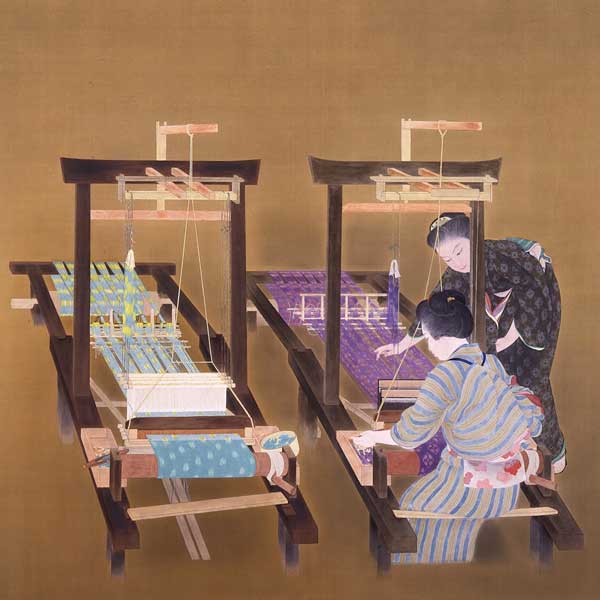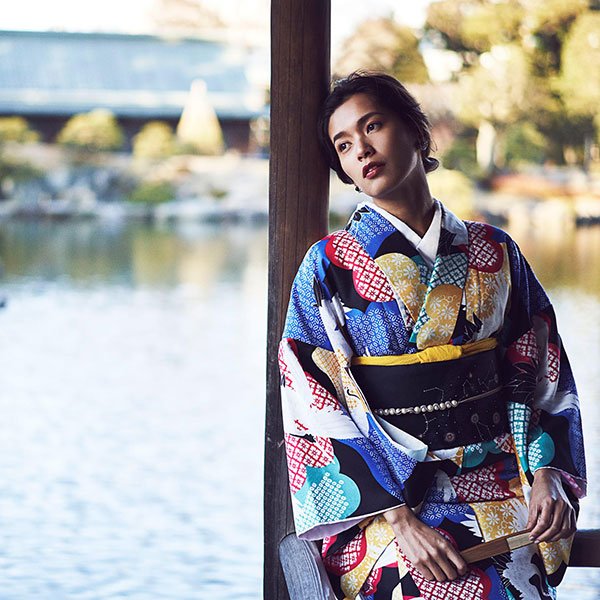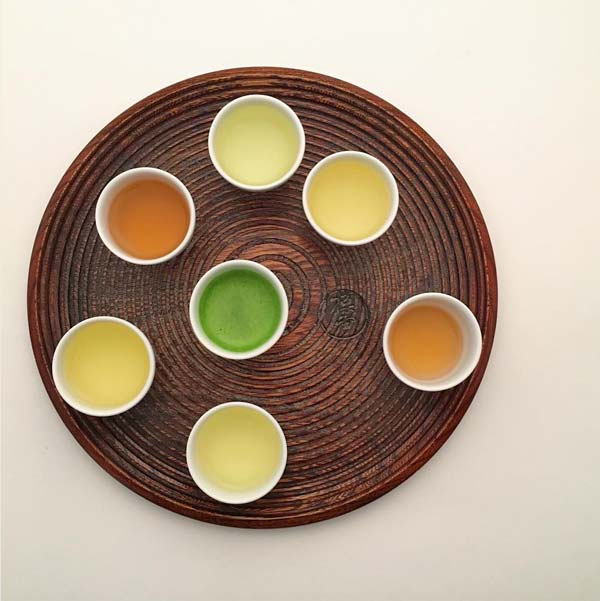10 Iconic Kengo Kuma Buildings You Should Visit
by Cole Lubchenko | TRAVEL
© Jeremy Bittermann, Portland Japanese Garden
Kengo Kuma and his firm have been at the forefront of modern Japanese architecture for the better part of the 21st century. Constantly evolving and adapting to changing global trends, Kengo Kuma seeks to build sustainable buildings at a scale designed for humans. His buildings are often warm, inviting, modest, and reflective of the cities and towns they are erected in.
Kuma’s designs focus on using natural materials that are sourced locally to create buildings that are comfortable for both occupants and passers-by. While he has many major projects in world-class cities in his portfolio, he still frequently makes time for smaller, more intimate projects in rural cities across Japan.
We’ll take a look at 10 Kengo Kuma buildings that showcase his architectural style and aspects of his design philosophy. This selection spans a variety of locations in many countries. If you find yourself near one, make sure to visit and see if you can get a sense of what makes this Japanese architect special!
1. Takanawa Gateway Station, Tokyo
© Go Tokyo, Takanawa Station
Takanawa Gateway is the newest station on Tokyo’s most important trainline, the Yamanote, which is a circular line that makes stops at all of Tokyo’s biggest hubs. Takanawa Gateway Station will very likely be the final station added to this important route. Despite the station’s newly chosen name being so unpopular that it caused over 9500 people to sign a petition to change it, the station itself has generally been received positively.
Takanawa Gateway Station’s design is decidedly paradoxical. It welcomes loud and hulking trains packed with passengers every two minutes, but is soft and warm. It evokes an aesthetic inspired by origami with lighting that is reminiscent of traditional shoji doors, but has a semi-transparent Teflon membrane roof with a photo-catalytic self-cleaning function that is as high-tech as it sounds. Takanawa Gateway Station marks a step away from the utilitarian train stations that are found all across Tokyo.
The station’s exterior is highlighted by its expansive white roof that glows a warm amber at night; the interior of the station is filled with pleasant light and laminated wood beams that set it apart from the steel and concrete found in most other stations in the city.
These techniques of using laminated wood, traditional Japanese influence, soft light, and openness are all representative of Kuma’s work, and his frequent employment of them will become obvious as you explore the other buildings in this list.
2. Nagaoka City Hall Aore, Nagaoka
© assarchitecture, Nagaoka City Hall Aore
Nagaoka City is located in Niigata prefecture in the Chubu region of Japan. Nagaoka City Hall Aore contains a semi-outdoor space inspired by the earthen floored rooms in traditional
Japanese houses. The city hall is, rather than an intimidating building used to represent the power of the municipal government, an open space for the public to come together as a community.
The city hall, which makes use of locally sourced wood, paper, and silk, focuses on being a place to promote social interaction. The open spaces are used as places for children to play, and for farmers and local producers to sell their goods. The semi-outdoor space is surrounded by repeating wooden elements that make it feel like a large, safe nest. Kuma has turned city hall into a building truly for the city.
3. V&A Dundee, UK
V&A Dundee
V&A Dundee, located in the Scottish coastal city of Dundee, is an annex of the Victoria & Albert Museum in London. While the previous buildings on this list have been generally warm, soft, and inviting, the V&A Dundee museum is, from the outside, craggy, cold, and oblique. It is a representation of the cliffside around Dundee. While appearing rough and random, the building certainly still has an aesthetically pleasing geometry.
The sharp and angular design of the V&A makes use of one of Kengo Kuma’s methods for making architecture inviting. The building features a cave-like “hole” that connects pedestrians from the city to where the River Tay meets the sea. Kuma likes to focus not only on buildings, but also the spaces between them, which he views as “holes”. The connective role of these holes is also inspired by the Japanese torii gates which mark the entrance to shinto shrines.
The “hole” in V&A Dundee also serves as the entrance to the building. The entrance opens to a large foyer that functions as a public venue for performances and concerts. This makes the museum much more friendly to residents; the foyer has been nicknamed The Living room of the City.
4. Asakusa Culture Tourist Information Center, Tokyo
© Kakidai / Creative Commons, Asakusa Culture Tourist Information Center
If you have had the chance to visit Tokyo, it is very likely that you have seen the Asakusa Culture Tourist Information Center. The building is located just across the street from the famous Kaminari-mon gate at Senso-ji Temple. The building’s warm and organic multi-tiered design mimics the famous five-storied pagoda of Senso-ji in a stylish and modern way.
This building highlights two more distinctive elements of Kengo Kuma’s architecture, randomly spaced louvres, and extended eaves. The series of seven stacked eaves, or overhanging roofs, make the structure look like seven one-story buildings of varying heights layered on top of eachother. Each floor is surrounded by repeating wooden louvers at random intervals which makes the building look more organic than buildings that use symmetrical patterns.
It is important that this tourist information center looks inviting, as it is at the heart of one of Tokyo’s most popular tourist districts, and it does. The design makes it stand out from the rest of the boxy structures in the area, but isn’t so different so as to be intimidating.
5. Japan National Stadium, Tokyo
© Taisei, Japan National Stadium
Designing an Olympic stadium is a difficult task no matter the circumstance, but for the Tokyo 2020 Olympics, Kengo Kuma faced a particular hurdle. Kengo Kuma’s design was not the first selected to be used for the Olympics. Originally, a neo-futuristic stadium designed by British-Iraqi architect Zaha Hadid was selected; however, due to concerns over the cost of building such a massive and complex structure as she proposed, the plan was scrapped and they had to choose a new architect to build something within the budget. Kengo Kuma was selected.
Not only did Kuma have to consider that his new design would be compared with Hadid’s, but he also had the added pressure of his stadium being compared with Kenzo Tange’s 1964 Olympic Stadium, which was the building that inspired Kuma to be an architect in the first place.
Kuma did not take this opportunity to build something as monolithic as Tange’s stadium, or as futuristic and exciting as Hadid’s. He instead looked back at traditional Japanese architecture, and designed a stadium that would fit in with the Meiji Jingu forest that the stadium would be situated in. The stadium is also relatively low to the ground so as to not stand out; Kuma often takes this approach, and has called skyscrapers embarrassing in the modern era.
The building uses wood from the 47 prefectures of Japan as a way to unite the entire country and makes use of natural airflow for cooling. It is an effort to transition to more sustainable designs and materials.
6. Odunpazari Modern Museum, Eskişehir, Turkey
© Naaro, Odunpazari Modern Museum
The Odunpazari Modern Museum is located in the area of a former lumber market in Turkey. The building’s facade is covered in stacked wooden timbers that make the terraced structure look like a stack of wooden boxes. The building doesn’t feel like a single unit, but instead like it is several smaller buildings; this way, it is more on a human-scale and is better incorporated with the neighborhood.
The stacked wooden timbers make the interior feel warm and inviting as the natural light is filtered through the spaces between them. The structure in general is inviting, despite being simple repeating geometric patterns. It is another way Kuma uses the materials of an area to create a structure that is both reflective of its surroundings and beneficial to the public as a whole.
7. Sunny Hills Japan, Tokyo
© Daici Ano, Sunny Hills
Sunny Hills in Omotesando is the smallest project on this list, but it is by no means the smallest project that Kuma has handled recently. He is constantly going between massive international projects and tiny local projects, which is part of the Japanese architect’s appeal.
Sunny Hills Omotesando is a pineapple cake shop that serves Sunny Hill’s cakes from Taiwan. The building, located on a quiet side street in the upscale Aoyama neighborhood of Tokyo, is covered in a lattice-like structure that resembles a woven cloth or a nest. Kuma calls this concept of using many repeating small pieces to make up a larger structure “particles”. He sees the use of particles as an alternative to transparency.
This structure definitely feels lightweight and transparent. Rather than using glass to achieve this transparency, which would result in a colder, more industrial look, using wooden “particles” makes the building feel inviting, like a nest.
8. Portland Japanese Garden - Portland, USA
© Jeremy Bittermann, Portland Japanese Garden
The Portland Japanese Garden is regarded as one of the finest Japanese gardens outside of Japan. Kuma was tasked with making a series of buildings to house the garden’s museum, cafe, and school. The buildings come together to create a small “cultural village” that is distinctly Japanese in design.
The roofs are covered with porous ceramic that allows greenery to grow on them, replicating the thatched roofs so typical of Japan, but with a more modern aesthetic. Kuma didn’t use many of his typical defining features on the exterior of the building, and it leaves it looking clean and traditional.
On the interior, Kuma made use of his favorite repeating wooden louvers. Like many of the other buildings on this list, it results in an interior that feels friendly, natural, and inviting. If you’re thinking of visiting yourself, consider these 5 Great Reasons to Visit Portland Japanese Garden!
9. The Exchange, Sydney, Australia
© Martin Mischkulnig, The Exchange
The Exchange in Sydney takes the tiered construction of the Asakusa Tourist Center, and the nest-like repeating pattern of Sunny Hills, to create a strikingly original structure that Kuma says “resembles thread wrapping around a spool.” The building’s circular structure appears to almost be in motion; this makes it stand out boldly from the blocky office buildings that surround it.
The Exchange’s curvy and flowing design is unique among Kuma’s typically angular work, but the repeating wooden elements make it stand out as distinctly his. This building is a beautiful example of making a structure that stands out without feeling separate from its surroundings.
10. M2 Building, Tokyo
© Kengo Kuma & Associates, M2 Building
The M2 Building isn’t typically found on lists of Kuma’s work, and it is often left out of his books. Kuma has admitted that he feels some embarrassment towards this building, and it isn’t totally unjustified, as the design philosophy behind this extremely postmodern structure seems antithetical to his current work.
While most of the buildings on this list have been described as warm, inviting, light, and friendly, the M2 building is none of those things. It is giant and oppressive. Instead of pleasant repeating elements it is an assemblage of disparate ideas smashed together in concrete.
This former Mazda dealership is now a funeral home, but it is hard to imagine a less comforting building to spend such a delicate time in. That being said, it is an original building, and it is certainly fun to look at. It is a loud example of postmodern architecture. This structure was one of Kuma’s first, and it is interesting to see how much his style has developed. This is one work that without knowing better, you would never pick out as Kuma’s design.
If you are interested in learning more about Kengo Kuma and his masterful architecture, I suggest picking up a copy of his book, My Life as an Architect in Tokyo. Fans of contemporary Japanese architecture should also check out these 10 Iconic Tadao Ando Buildings You Should Visit.
JO SELECTS offers helpful suggestions, and genuine recommendations for high-quality, authentic Japanese art & design. We know how difficult it is to search for Japanese artists, artisans and designers on the vast internet, so we came up with this lifestyle guide to highlight the most inspiring Japanese artworks and designs for your everyday needs.
All product suggestions are independently selected and individually reviewed. We try our best to update information, but all prices and availability are subject to change. Japan Objects is a member of the Amazon affiliates program and if you buy something through our links, Japan Objects may earn an affiliate commission at no cost to you.














TRAVEL | April 26, 2024